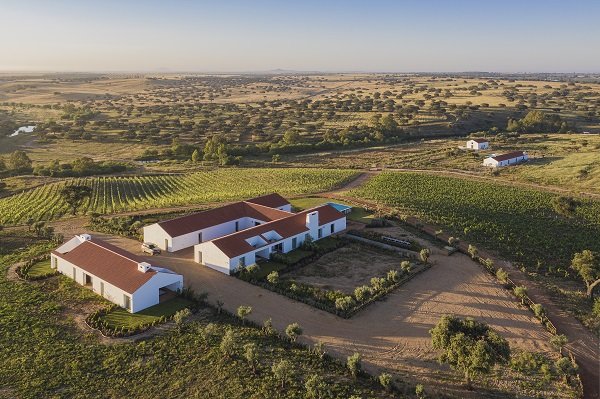The Alentejo is a bit like the promised land to those who seek to find peace in Portugal. The last haven of calm in a busy life, dominated by traffic, goals, and stress. It is no wonder that so many city folks have made the Alentejo a destination to escape to in a complex world.
The plains and cork forests are the setting of a unique farmhouse, one that today is what so many seek in a vacation rental, rural inn, and vacation home: The Monte Alentejano.
When Portuguese talk about a Monte Alentejano, they do so with a sense of tranquility, rest, harmony but a splendid rural isolation. This rural escape is at the heart of Monte Alentejano as it exists today.
They are simple linear whitewashed farmhouses, set on hills, and surrounded by fields and orchards. Some may confuse the Monte with an Herdade. Rule of thumb, the Herdade is the land and farmhouse, while the Monte is the house itself, often set on a hill, or monte.
The Monte as a place dates back to the 7th century BC to the time of the Phoenicians, who came to the region to build trade routes to the Iberian Peninsula. They encouraged setting small farms along the route, with towns being centers of trade. The Monte Alentejano began with the influence of the ancient Mediterranean world, with a sense of privacy of space as a main feature, with the house being set in the center of a courtyard, a break with the traditional dwellings of the time set for safety in large towns. Excavated sites in Alentejo show that the settlements were similar and built near good soils and small floodplains.
Coming from the coastal region, the construction techniques and the organization of the space moved into the Alentejo interior, allowing the creation of small self-sustainable rural communities, predominantly built next to water sources, near agriculture. Archaeological studies find these ancient prototypes of Monte Alentejanos were built of stone and earth and would be, as they are still, painted white.
Then came the descendants of the Phoenicians, the Carthaginians, and then the Romans - who settled the area — building rural farms and villas in the same style. They called them montis. Centuries later Arabs ran big towns, as rural farmers continued to work the land. Then came the Portuguese era in the 12th century, and the Monte continued as a unique farm, found mostly south of the River Tejo.
The rural communities these Montes formed, which lived off agriculture and livestock, ended up generating a new landscape and a new way of life that was unique to the Alentejo.
So why are these simple single story farmhouses in such demand today? Many sit long abandoned, surrounded by olive groves, cork trees and fields, others have been renovated, with blue pools, and shady patios, still more are as they have always been — quaint, old fashioned and simple with multi-use living spaces, summer kitchens and very thick walls.
They are often set a ways off the road, wrapped by pastures, olive and grape fields with a nearby agricultural tank — and shade. One story high, with red tile roofs, small windows and impossibly thick walls. These farmhouses tended to grow with families, but grow in a linear way, often with rooms serving several purposes. The kitchens tend to have a huge fireplace for smoking sausages and curing meats, and a bread oven. The floors were tile, slate or cement — and the outside is always white, with a yellow or blue border.
The Monte today has become very attractive to those relocating or finding a 2nd home in Portugal. The simple rural lifestyle, views and timeless nature makes the Monte quite desirable to many. They are found from north to south in the Alentejo, running from the fertile fields of the Tejo to the mountains of the Algarve, and in the lands from the Atlantic to the Guadiana.



